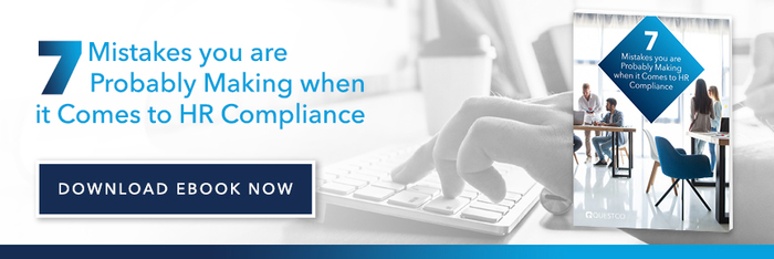Topic Risk Management,
What's the Harm in Misclassifying Hourly Employees?
.jpg)
November 21, 2019 | By Esther Ellington
.jpg)
Classifying employees may be straightforward for companies that only use the traditional “punch-in hourly model,” but this model is rarer and rarer as time goes on.
Now, many companies have people working under a variety of frameworks, and classifying them all properly is extremely important. Errors can lead to hefty fines and serious damage to a company's reputation.
The Consequences of Common Errors
The most common error involves classifying statutory employees as independent contractors. This causes employees to have to shoulder more of a tax burden than they should. When federal or state regulators catch on, they penalize the company in a variety of ways.
In one such case, an aeronautics company was forced to pay its employees $951,456 to compensate them for related expenses that the affected workers shouldn't have been responsible for.
The federal Fair Labor Standards Act, or FLSA, is usually the governing law in these cases which states when someone must be classified as an employee and what the exemptions are.
However, state laws that require more pay or other improvements supersede it. The Internal Revenue Service (IRS) also has its own set of rules that must be followed.
An Overview of the Employee Classification Problem
The FLSA is a law that provides the framework for many aspects of the employment relationship. It dictates the federal minimum wage, overtime regulations, child labor laws, when someone is or is not off the clock, and more. Most employees are covered by the Act, but not all.
Covered employees can be paid a salary or hourly wage, must make 1.5 times their normal rate for overtime, can earn any amount per week and can be in any field.
Exempt employees, on the other hand, must earn at least $455 per week at the time of this writing, are not entitled to overtime pay, and can only be working in one of eight categories. Some of the exempt categories are:
- Commissioned sales employees
- Certain computer professionals
- Drivers, driver's helpers, mechanics, and loaders
- Farmworkers
- Executives and administrators
For all of these, there are specific criteria that must be met. There is no blanket exemption covering any entire profession.
Contractor Versus Employee
Differentiating between a contractor and an employee can be an especially confusing process. This is partly because the distinction is made based upon "economic reality" instead of a cut-and-dried technical definition.
In general, if a person is dependent on one company and serves it in the way an employee would, that person is an employee. A variety of details are used to pin down the proper classification.
Some common misconceptions are:
- Working remotely or having flexible hours does not make someone an independent contractor
- Misclassifying an employee is not legal even if the employee agrees to it
- Receiving a 1099 does not make one into an independent contractor
- "Common industry practice" does not supersede the law
Government Administrations in Charge of Enforcement
Most classification issues are handled by the National Labor Relations Board (NLRB), but for undocumented immigrants, this problem is dealt with by the Department of Labor. Anonymous complaints can be filed as well, and these are usually investigated.
If the Department of Labor's Wage and Hour Division does the investigation, it will also check for violations of other laws, such as the Migrant and Seasonal Worker Protection Act, OSHA's field safety standards, the Family and Medical Leave Act, and many more. While many investigations arise from complaints, not all do.
When violations are found, penalties can include fines, back pay, and liquidated damages. These can be extremely expensive, even if they were the result of an error. In the case of a basic error, it's $50 for each W2 that wasn't filed, 40% of the employee's FICA contributions, 100% of the employer's FICA contributions, and more. If found to be intentionally misclassifying hourly employees, the penalties rise to 20% of all wages paid, 100% of FICA contributions for both sides, $1000 in criminal penalties for each misclassified employee, up to a year in jail, and other consequences.
As this shows, it is extremely important to classify employees properly. Rather than hiring and training someone as an in-house expert, it is more efficient and less costly to outsource this task to dedicated experts in regulatory compliance.

Esther Ellington
Esther Ellington is the Director of Client Services at Questco Companies. Leading the Client Services and Onboarding Teams to deliver an exceptional client experience from the beginning of the client relationship and beyond.



